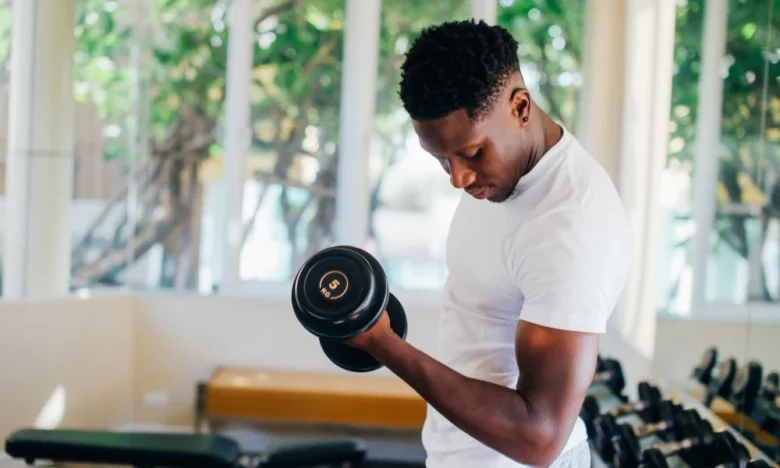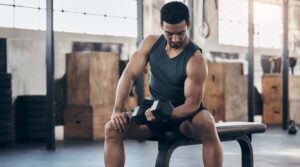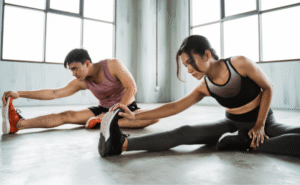Many individuals can be reluctant to start their fitness journey due to an all-or-nothing approach, which causes a stop/start relationship between exercise and their lifestyle. Fitness is a lifelong journey of wellness that begins with creating an effective beginner workout plan to build strength over time.
1. Warm Up
Have you seen athletes flapping their arms around, running forward and back, etc., before a race or soccer game? That is an example of a warm-up: increasing blood flow to muscles while raising their temperature.
Warm-up exercises help prepare muscles for physical activity and lower the risk of injury. Beginners should begin with low-intensity aerobic activities like walking, jogging, jumping rope, or pedaling on a bike before moving on to dynamic stretching and exercises. You should take this time to reflect upon goals, motivation, and recommitment towards your fitness journey—even writing them down could help!
2. Stretch
Stretching before and after exercise may seem like a time-consuming inconvenience, but stretching can actually prevent injury by loosening tight muscles that have been sitting idle all day long and potentially becoming vulnerable to sudden exertion. Stretching prior to and post workout is vitally important to avoiding muscle injuries caused by sudden activation.
Start with a wide stance that exceeds your hip/shoulder width, then engage your core while slowly lowering yourself until the right thigh is parallel with the ground, and hold for your desired rep length before returning back up again. Avoid any bouncing movements when stretching to prevent injury; use dynamic rather than static stretches for optimal results.
3. Strength Training
Strength training (also referred to as resistance or weight training) uses resistance against gravity to build muscles and increase bone density while also helping prevent injuries, boost metabolism, and enhance posture.
Beginners should begin with two full-body workouts per week using just their body weight or very light weights with two minutes of rest between sets to achieve all of the health benefits associated with resistance training. Beginners can gradually build up to three sets per muscle group; however, proper form should always be observed to prevent injury.
4. Cardiovascular Exercise
Cardiovascular exercise, commonly referred to as endurance training, strengthens heart muscles while helping the body control blood pressure, regulate sugar and cholesterol levels, relieve stress, and avoid osteoporosis. Furthermore, cardiovascular training increases the release of antibodies and white blood cells, which work to combat infection.
Fitness experts advise those aiming to lose weight or improve their health to engage in at least 30 minutes of cardiovascular exercise on three occasions each week; beginners should begin slowly and build up gradually toward this goal. Beginners should spend five to 10 minutes warming up prior to beginning cardiovascular exercises. Warm-up exercises such as walking or jogging should help gently increase the flow of blood to muscles for maximum efficiency and increase range of motion.
5. Flexibility Training
Beginners should aim for at least 150 minutes of moderate-intensity aerobic activity per week and two days dedicated to muscle-strengthening exercises, with two to three sets of 8-12 repetitions of each exercise as 1 set in their workouts.
Flexibility training involves stretching muscles to increase their range of motion. To avoid injury, flexibility exercises should be performed after engaging in muscle-strengthening activities. One popular test of flexibility is the sit-and-reach, in which participants stand with feet apart before flexing hips to touch toes with fingers spread apart—this stretches your lower back, hamstrings, and calves.
6. Yoga
Yoga can be an effective way to reduce stress and increase balance and flexibility while building community, gaining self-awareness, and reaching emotional equilibrium. Make sure that the studio you choose offers low-pressure classes taught by patient instructors with class schedules that fit into your lifestyle. Discuss any health or fitness restrictions ahead of time if this will be your first class with them, and be sure to share any important details, such as when it will take place and any expected outcomes.
If a studio doesn’t fit your schedule or lifestyle, practice at home using online classes designed for beginners with clear instruction and verbal cues for modifications.
7. Weight Training
Fitness programs can lower your risk of chronic diseases, improve balance and coordination, raise self-esteem, aid sleep, and prevent injury. But commitment is the cornerstone of success with any fitness plan. Strength training involves lifting external weights against gravity to develop muscle mass and build strength. Compound exercises like squats, deadlifts, and bench presses engage multiple muscle groups simultaneously for faster muscle gains while burning more calories simultaneously.
Beginners should start out using light weights and gradually work up to three sets of 8–12 repetitions per exercise. Warm-up exercises like walking or dynamic stretching, followed by static stretching as a cool-down, can help prepare muscles both before and after their workouts.
8. Swimming
Swimming is an excellent low-impact exercise to burn calories, build strength, and tone muscles. Plus it’s fun! Swimming can also provide the opportunity for social interactions between friends or family, helping older adults stay active as they age.
Beginners to swimming should prioritize breath control and floating as early as possible to reduce water resistance and make workouts more manageable. If you’re new to swimming, consider enrolling in a swim lesson at your local rec center, Y, or fitness facility. Group and individual lessons may be available depending on availability.
9. Pilates
Pilates is an ideal low-impact exercise suitable for newcomers to the world of exercise, offering core strengthening through gentle workouts at home. Pilates builds strength through these workouts to support everyday movement like climbing the stairs or picking up children.
Before beginning any fitness regime, it is a beneficial idea to speak to your physician first and find an instructor trained specifically in meeting your individual needs and goals. Reformers are an ideal option for Pilates practice in a studio setting; mat exercises at home may also work. Add hand weights for added intensity in exercises such as side-lying clams.




